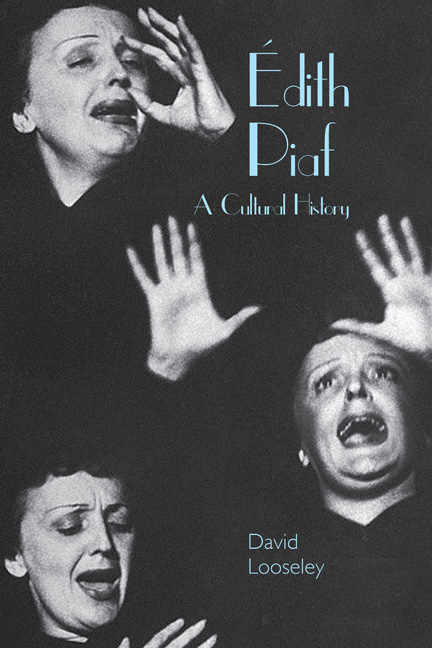8 - Remembering Piaf
from Part III - Afterlives
Summary
‘Piaf can't die… She won't ever die… She's gone, that's all’
(Marcel Blistène)In October 2012, the American singer Lady Gaga was reported to have bought up Piaf memorabilia which included clothes, shoes, letters and even toenail clippings. She was also said to be trying to buy the rights to some Piaf songs so she could sample them. ‘Gaga sees a lot of herself in Édith’, asserted one insider. ‘She, too, was a rebellious character in her era.’ The equation is improbable, but it does illustrate how symbolic Piaf has become. Still world-famous, she is a sacred reference for singers young and old, male and female, French and otherwise. French TV news, covering at length the fiftieth anniversary of her death in October 2013, explained: ‘She remains a giant in the hearts of the French […]. After half a century, she might have been forgotten, but that's not the case at all.’ The question is why.
Decennial and even quinquennial commemorations of her passing have become stock events in the French cultural calendar, and on such occasions books about her roll off the presses relentlessly. The forms the jubilees take are generally similar, but they are interesting for what they can tell us about how the imagined Piaf has managed to survive for 50 years in her absence and how she's become an international currency. These are the issues I want to tackle here. I'll trace how a modern ‘commemorative consciousness’—the mentality that makes us solemnly remember the likes of Churchill and Kennedy or the start of the Great War—has come to bear on Piaf, at home and abroad. In the next chapter, I'll consider what she has come to mean in the process of remembrance.
In France, rituals of remembrance were established quite rapidly, initially as a result of personal sentiment. The impressionistic recollections in Blistène's Au revoir Édith set the agenda. Like a number of his successors, he claimed a special relationship, as old friend and confidant. His book, structured only by grief and reminiscence, is all superlatives: her intuitive artistry, the infatuated responses of her audiences, her adorable personality and unstinting generosity. ‘She understood it all’, he enthused, ‘she got it, and what her life as a poor kid hadn't taught her she'd picked up herself, by intuition […].
- Type
- Chapter
- Information
- Édith PiafA Cultural History, pp. 153 - 170Publisher: Liverpool University PressPrint publication year: 2015

